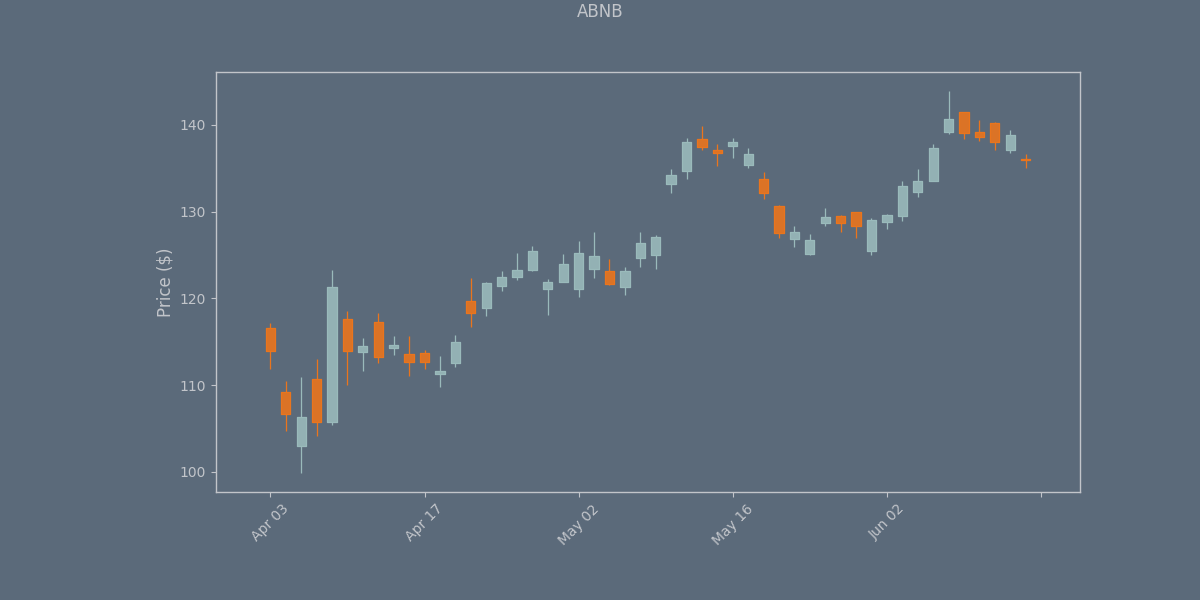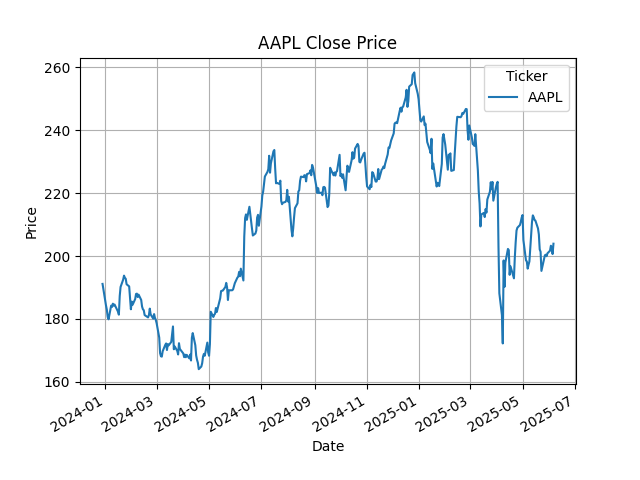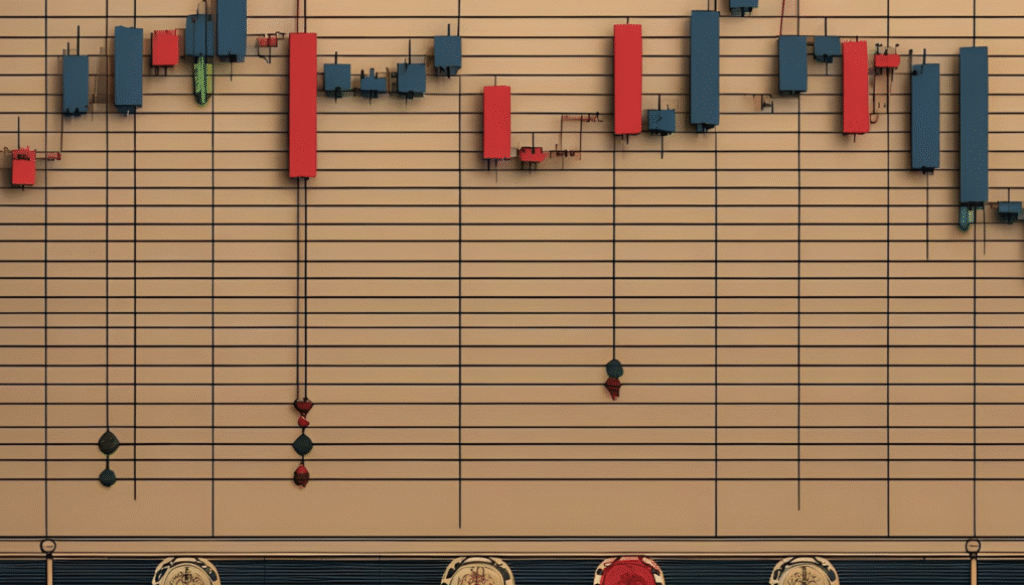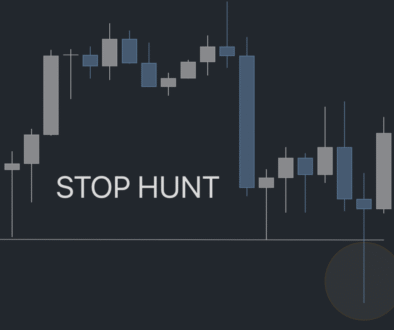Let’s Create a Chart
Let’s Start Plotting Charts with Python (No, I’m Not Teaching You Python)
Hey there — Ozy here.
In this post, we’re diving into the very beginning of using Python to create candlestick charts. But before you panic — no, I’m not here to teach you Python from scratch. I didn’t learn this stuff to become a software engineer, and I’m guessing you didn’t come here for that either.
I started learning code because I wanted to see my trading ideas on a chart without spending hours clicking around on clunky platforms. That’s what this is all about: using Python to make your own tools, even if your code isn’t perfect (mine sure isn’t).
What You’ll Get From This Blog
We’re starting with basic chart plotting — just enough to get you familiar with what’s possible. You’ll be able to see candlesticks, adjust timeframes, and play around with simple customizations.
This is not a tutorial, and I won’t be walking you through Python line-by-line. What I will do is give you ready-to-run code in future posts, with explanations you can actually understand — no fluff, no fake guru stuff.
Why Start Here?
Because charts are where it all begins. Before we jump into candlestick patterns, support/resistance levels, or Smart Money traps, you need to build your own charting foundation. That’s what this post is about.
You’ll be able to:
Run code that displays your first candlestick chart
Change how it looks (colors, sizes, themes)
Plug in your own data if you want to explore
What’s Coming Next?
Once we’ve got charts working, we’ll move into the fun part:
Finding patterns and behavior that actually matter.
Upcoming topics will include:
Detecting candlestick types like Doji, Hammer, Engulfing, etc.
Pattern recognition using logic and price structure
Drawing support & resistance automatically
Price action setups like liquidity grabs and trap zones
Smart Money Concepts with code you can actually use
And yes — building your own signal system from scratch
You’ll always be free to take what I write and make it better. That’s the beauty of coding — once you start, you realize you can tweak and test everything your own way.
So if you’re ready to take the first step — not into “learning to code” but into building your own trading tools — you’re in the right place.
Let’s go.
ozy
from tvDatafeed import TvDatafeed, Interval
import mplfinance as mpf
from datetime import datetime, timedelta
import pandas as pd
from ggplot import ggplot # Import the style function
## Initialize TVDataFeed (no login needed for public data)
tv = TvDatafeed()
## Set parameters
ticker = 'ABNB'
exchange = 'NASDAQ' # Change if needed for your instrument
start_date = datetime(2024, 1, 1)
end_date = datetime.now()
## Fetch data from TradingView
data = tv.get_hist(
symbol=ticker,
exchange=exchange,
interval=Interval.in_daily, # Daily candles
n_bars=50, # Get enough bars to cover your date range
extended_session=False
)
## Convert to proper DataFrame format
data.index = pd.to_datetime(data.index)
data = data.rename(columns={
'open': 'Open',
'high': 'High',
'low': 'Low',
'close': 'Close',
'volume': 'Volume'
})
## Filter for date range
data = data[(data.index >= start_date) & (data.index <= end_date)]
## Get the style from the separate file
ggplot_style = ggplot()
## Plot candlestick chart
mpf.plot(
data,
type='candle',
style=ggplot_style,
title=f'{ticker}',
ylabel='Price ($)',
volume=False,
figsize=(12, 6),
datetime_format='%b %d'
)

import yfinance as yf
import matplotlib.pyplot as plt
# Download data
data = yf.download("AAPL", start="2023-12-29", end="2025-06-09")
# Plot Close price
data['Close'].plot(title="AAPL Close Price")
plt.xlabel("Date")
plt.ylabel("Price")
plt.grid()
plt.show()

import ccxt
import mplfinance as mpf
import pandas as pd
from datetime import datetime
# Initialize exchange
exchange = ccxt.binance()
# Define date range
start_date = "2025-05-01"
end_date = "2025-06-01"
# Convert to timestamps (in milliseconds)
start_timestamp = int(datetime.strptime(start_date, "%Y-%m-%d").timestamp() * 1000)
end_timestamp = int(datetime.strptime(end_date, "%Y-%m-%d").timestamp() * 1000)
# Fetch data (using 4-hour candles for better granularity)
timeframe = '1d'
symbol = 'BTC/USDT'
ohlcv = exchange.fetch_ohlcv(symbol, timeframe, since=start_timestamp, limit=1000)
# Create DataFrame
df = pd.DataFrame(ohlcv, columns=['time', 'open', 'high', 'low', 'close', 'volume'])
df['time'] = pd.to_datetime(df['time'], unit='ms')
df.set_index('time', inplace=True)
# Filter for our date range
df = df.loc[start_date:end_date]
# Plot candlestick chart
mpf.plot(df,
type='candle',
style='charles',
title='BTC/USD Daily Chart',
volume=False,
datetime_format='%m-%d %H:%M',
show_nontrading=False)






